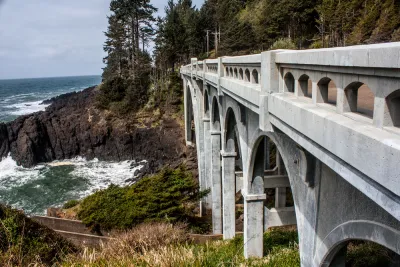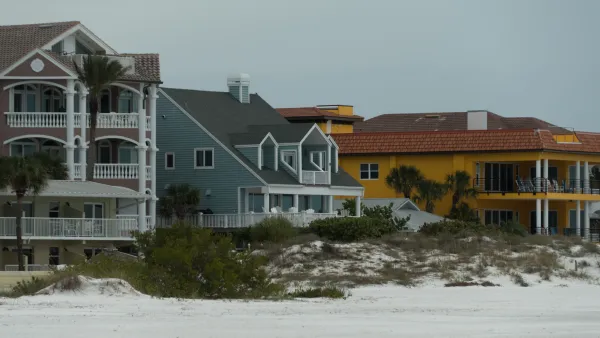As Oregon's coastal beaches erode, taking valued public space with them and exposing private property to increased risks from flooding and sea-level rise, some local governments want to allow property owners the right to "armor" the coast.

After decades of enforcing a state law banning construction of rip-rap, or a barrier constructed of large rocks, along the coastline, Tillamook County, Oregon has decided to toss the state law and allow coastal homeowners to reinforce the coastline to protect their homes, according to an article by Kristian Foden-Vencil for OPB.
"Oregon land-use rules largely ban shoreline armoring, under what’s known as Goal 18," explains Foden-Vencil in the article. "The policy, adopted back in 1977, banned the use of rip rap to protect new development, unless the site qualified for an exception."
Goal 18 was adopted to protect the natural features of the Oregon Coast, but scientists have also shown that rip rap "changes the wave action on a beach, scouring away sand and potentially leaving no beach for the public to enjoy," according to the article.
"So there’s a natural friction between the hundreds of thousands of Oregonians who live on the coast and want their properties protected from the ocean, and environmentalists and visitors who vacation here and want to protect the beautiful vistas."
As reported in the source article below, Tillamook County, located on the Oregon Coast directly west of Portland but south of the mouth of the Columbia River, has recently begun to favor rip rap over public beaches.
But environmentalists aren't allowing the shift in land use policy without a legal fight. "The Oregon Shores Conservation Coalition is fighting Tillamook County’s decision and taking the Pine Beach case to Oregon’s Land Use Board of Appeals, or LUBA. They’re joined in their case by the Surfrider Foundation and the Oregon Department of Land Conservation and Development," reports Foden -Vencil.
FULL STORY: Oregon’s land-use rules bump up against increasingly crowded shorelines

Analysis: Cybertruck Fatality Rate Far Exceeds That of Ford Pinto
The Tesla Cybertruck was recalled seven times last year.

National Parks Layoffs Will Cause Communities to Lose Billions
Thousands of essential park workers were laid off this week, just before the busy spring break season.

Retro-silient?: America’s First “Eco-burb,” The Woodlands Turns 50
A master-planned community north of Houston offers lessons on green infrastructure and resilient design, but falls short of its founder’s lofty affordability and walkability goals.

Test News Post 1
This is a summary

Analysis: Cybertruck Fatality Rate Far Exceeds That of Ford Pinto
The Tesla Cybertruck was recalled seven times last year.

Test News Headline 46
Test for the image on the front page.
Urban Design for Planners 1: Software Tools
This six-course series explores essential urban design concepts using open source software and equips planners with the tools they need to participate fully in the urban design process.
Planning for Universal Design
Learn the tools for implementing Universal Design in planning regulations.
EMC Planning Group, Inc.
Planetizen
Planetizen
Mpact (formerly Rail~Volution)
Great Falls Development Authority, Inc.
HUDs Office of Policy Development and Research
NYU Wagner Graduate School of Public Service




























